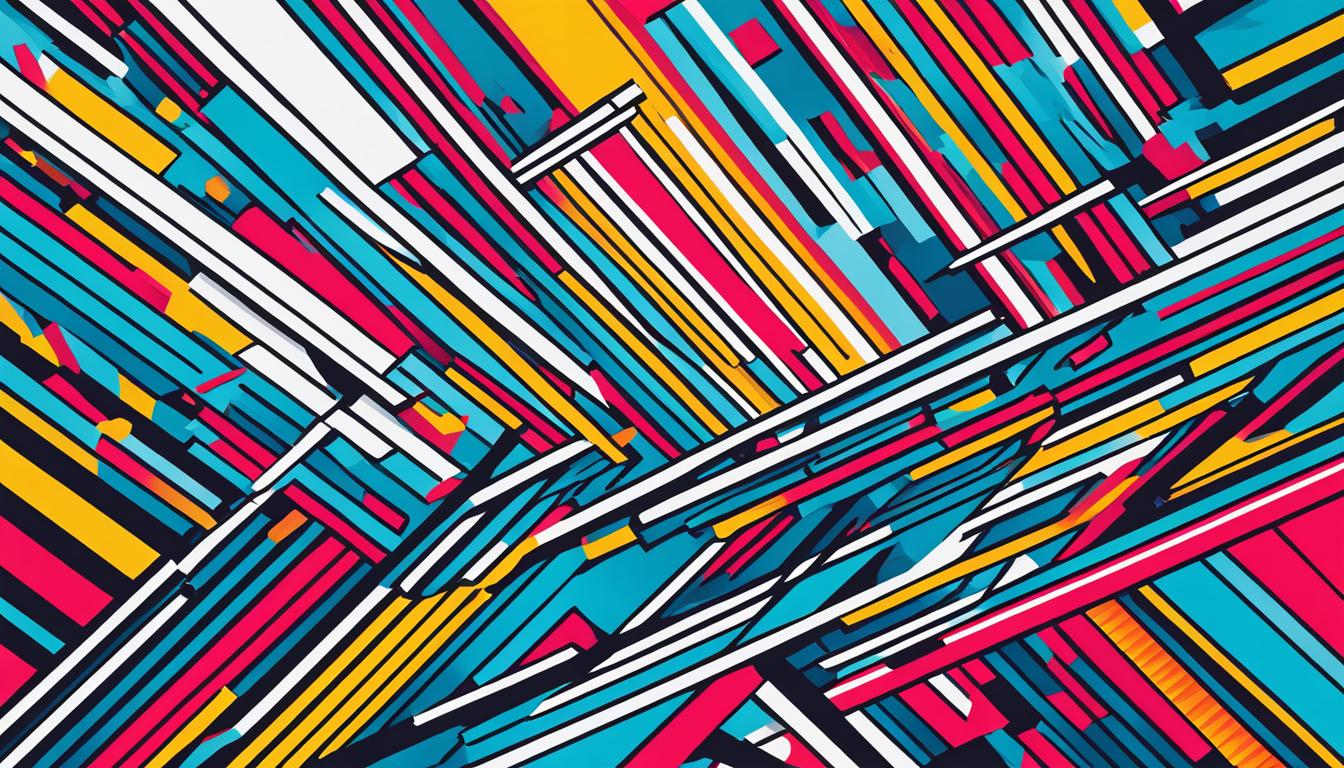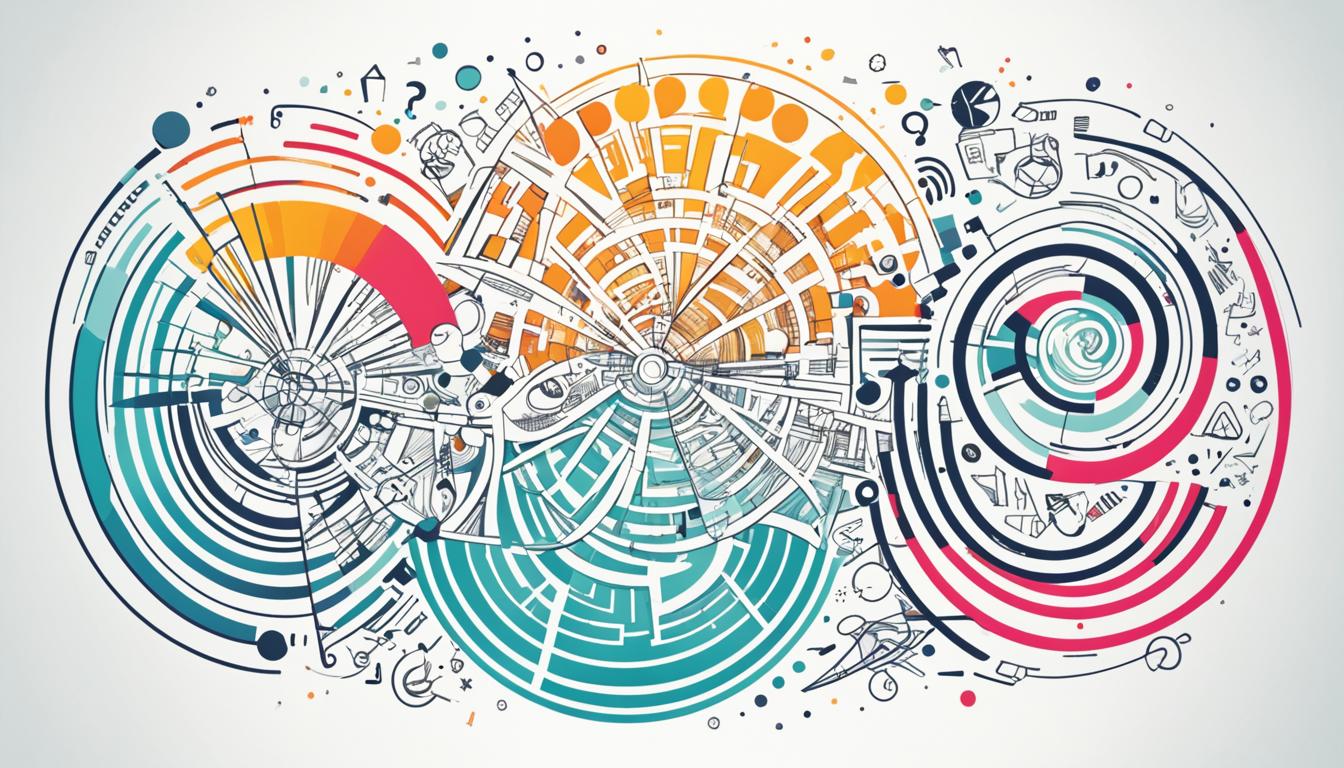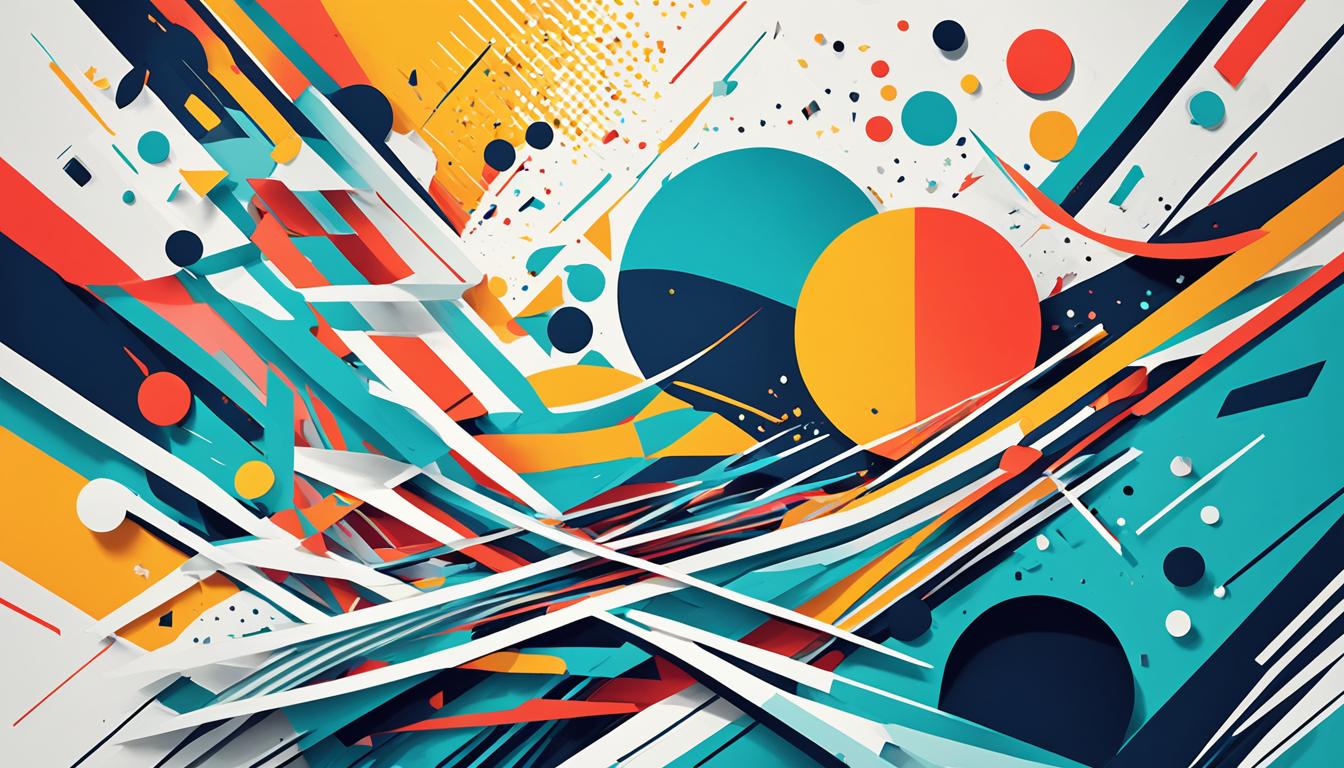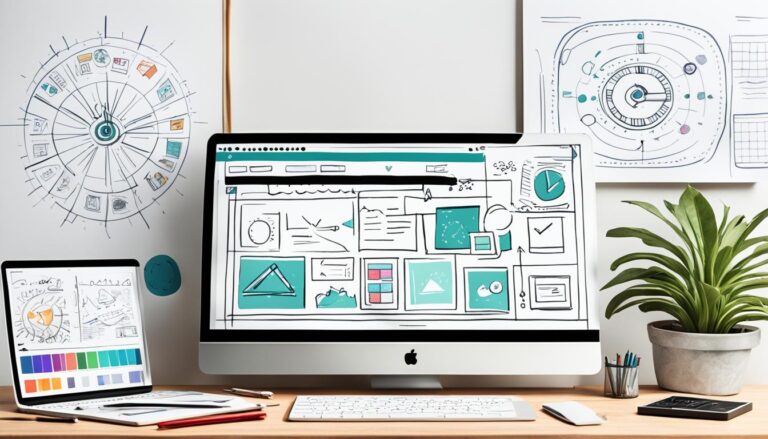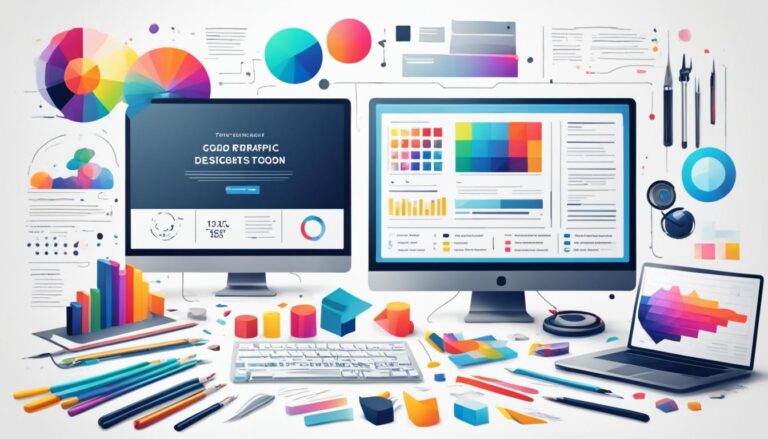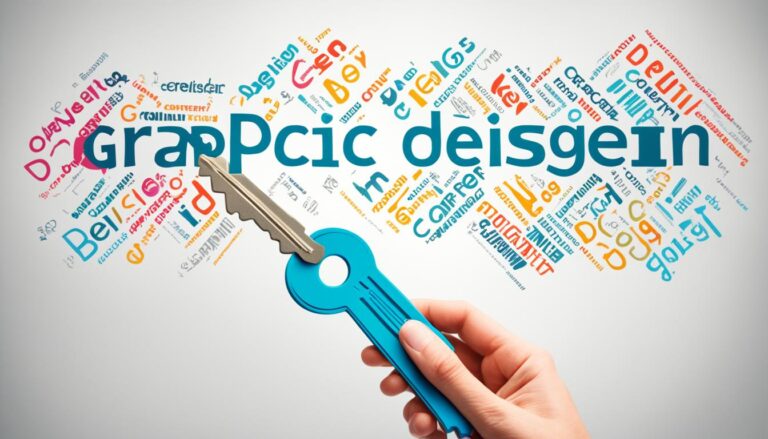Crafting Graphic Designs: A Step-by-Step Guide
Welcome to our comprehensive guide on crafting graphic designs. Whether you’re a designer looking to refine your skills or a business owner wanting to create eye-catching visuals, this step-by-step guide will walk you through the process of creating impactful graphic designs. From understanding the design brief to conducting user testing, we’ll cover everything you need to know.
Graphic design plays a crucial role in communication, with a whopping 55% of companies using it for various purposes, including social media engagement and internal communication[1]. To kickstart your graphic design journey, it’s important to understand the eight-step design process, which includes the design brief, research phase, concept development, design review, iteration, approval, and user testing[1].
At the core of the design workflow is the design brief, which sets the goals and strategies for the project. It serves as the foundation for the entire design process[1]. Additionally, good research is key to guiding designers in new directions and inspiring innovative ideas[1].
Follow along as we dive deep into each stage of the graphic design process, providing valuable insights and tips along the way. By the end, you’ll have all the knowledge you need to create exceptional graphic designs that captivate your audience and elevate your brand.
Stay tuned for the following sections, where we’ll explore the different types of logos and how to design them, ensuring your brand stands out in a crowded marketplace.
Sources:
[1] First Source
Types of Logos
When it comes to logo design, there are various types of logos that companies can consider. Each type has its own unique characteristics and suits different brand identities and messaging. Let’s explore the seven main types of logos:
- Emblems: Emblems are traditional logos that combine text and symbols in a unified image. They often have a sense of history and authority.
- Pictorial Marks: Pictorial marks, also known as logo symbols, use a single image or icon to represent the brand. These logos are simple, memorable, and visually impactful.
- Wordmarks: Wordmarks, or logotypes, are text-based logos that use typography and color to create a distinctive look. They focus on the brand’s name and can help with brand recognition.
- Monogram Logos: Monogram logos, also called lettermarks, use the initials of a longer company name as a streamlined logo. They are clean, concise, and visually appealing.
- Abstract Logo Marks: Abstract logo marks use unique visual representations to convey the brand’s identity. These logos rely on creative interpretations and can be highly symbolic.
- Mascot Logos: Mascot logos utilize illustrated characters to create a friendly and approachable brand image. They are often used by sports teams, schools, or businesses targeting a younger audience.
- Combination Marks: Combination marks combine text and symbols to create a versatile logo. This type of logo allows for both brand recognition and flexibility in different applications.
Understanding the different types of logos can help businesses make informed decisions and choose a logo that aligns with their brand identity and target audience.
“A well-designed logo is crucial for building brand recognition and establishing a strong visual presence.” – Logo Design Expert
| Logo Type | Description |
|---|---|
| Emblems | Traditional logos that combine text and symbols in a unified image |
| Pictorial Marks | Logos that use a single image or icon to represent the brand |
| Wordmarks | Text-based logos that use typography and color for brand recognition |
| Monogram Logos | Logos that use initials as a streamlined logo for longer company names |
| Abstract Logo Marks | Logos that use unique visual representations of the brand |
| Mascot Logos | Logos that use illustrated characters to create a friendly brand image |
| Combination Marks | Logos that combine text and symbols for a versatile logo |
How to Design a Logo
Designing a logo is a crucial part of establishing your brand identity. It requires careful consideration and a well-defined design process. Here’s a step-by-step guide to help you create a logo that reflects your brand values and resonates with your target audience.
1. Understand Your Brand
To create a successful logo, it’s important to have a deep understanding of your brand. Define your story and brand values to guide your design decisions. Ask yourself questions like:
What does your brand stand for?
What emotions do you want your logo to evoke?
What sets your brand apart from others?
This understanding will serve as the foundation for your logo design.
2. Brainstorm and Research
Start by brainstorming words and concepts that describe your brand. This exercise will help you generate ideas and keywords that can guide your logo design. Research industry trends and the logos of other successful brands for inspiration. Consider what resonates with you and your target audience.
3. Sketch and Refine
With your brand values and research in mind, begin creating rough sketches of your logo ideas. Experiment with different shapes, symbols, and typography. Don’t worry about perfection at this stage; the goal is to explore different possibilities. Choose a sketch that aligns with your brand values and refine it further.
4. Develop the Logo Layout
Once you have a refined sketch, it’s time to bring your logo to life digitally. Use design tools like Canva or other free design platforms to create the layout for your logo. Pay attention to the overall composition, spacing, and visual balance of the elements. This step is crucial in creating a polished logo design.
5. Choose Colors and Fonts
Select colors that align with your brand identity and industry trends. Consider the psychological impact of colors and choose ones that evoke the desired emotions. Additionally, choose a font that complements your logo design and reflects your brand personality. The right colors and fonts can enhance the visual appeal and memorability of your logo.
6. Ensure Scalability
It’s important to ensure that your logo is scalable. It should look equally good at different sizes and across various applications, from business cards to billboards. Test your logo in different sizes to ensure that all the elements remain clear and legible. This scalability allows for versatility and consistent branding.
| Logo Design Process | Description |
|---|---|
| Understand Your Brand | Define your brand story and values to guide logo design decisions |
| Brainstorm and Research | Generate logo ideas and gather inspiration from industry trends |
| Sketch and Refine | Create rough sketches of logo designs, choose one, and refine it |
| Develop the Logo Layout | Create the digital layout of your logo using design tools |
| Choose Colors and Fonts | Select colors and fonts that align with your brand identity |
| Ensure Scalability | Test the scalability of your logo to ensure clear visibility at different sizes |
Conclusion
Creating effective graphic designs and logos requires a step-by-step approach that encompasses the design brief, research, concept development, design review, iteration, approval, and user testing. By following this comprehensive guide, individuals and companies can create visually appealing designs that effectively communicate their message.
Logo design is a vital component of graphic design, and understanding the different types of logos available can help in selecting the most suitable one for a brand. Whether it’s an emblem, pictorial mark, wordmark, monogram logo, abstract logo mark, mascot logo, or combination mark, each type serves a distinct purpose in representing and promoting a brand.
When designing a logo, it is crucial to have a deep understanding of your brand’s identity. Through careful brainstorming, sketching, refining, and creating a layout, you can ensure that your logo reflects your brand’s values and resonates with your target audience. Choosing the right colors, fonts, and ensuring scalability further enhance the impact of your logo.
By adhering to this step-by-step guide and embracing the principles of graphic design, individuals and businesses can create captivating and impactful designs. Whether it’s for print materials, digital platforms, or marketing collateral, a well-crafted graphic design or logo has the power to leave a lasting impression and convey key messages effectively.
FAQ
What is the eight-step graphic design process?
The eight-step graphic design process includes the design brief, research phase, concepts, concept development, design review, iteration, approval, and user testing.
What is the importance of the design brief in the graphic design workflow?
The design brief is the cornerstone of the design workflow as it sets goals and strategies for the project.
How does research play a role in the graphic design process?
Good research is essential in the graphic design process as it can guide designers in new directions.
What is the significance of brainstorming and idea generation in the design process?
Brainstorming and idea generation are crucial parts of the design process as they help generate innovative concepts.
How does design review contribute to improving the design?
Design review allows for structured feedback and helps in identifying areas for improvement in the design.
What is the purpose of iteration in the graphic design process?
Iteration involves making improvements based on feedback and collecting additional input to refine the design.
Why is the approval stage important in the graphic design process?
The approval stage in the graphic design process ensures that all stakeholders are on the same page before finalizing the design.
How does user testing contribute to the design process?
User testing helps gather feedback from users or customers, which can be used to refine the design and enhance its usability.
What are the seven main types of logos?
The seven main types of logos are emblems, pictorial marks, wordmarks, monogram logos, abstract logo marks, mascot logos, and combination marks.
What is an emblem logo?
An emblem logo is a traditional logo that combines text and symbols in a unified image.
What is a pictorial mark logo?
A pictorial mark logo uses a single image to represent the brand.
What is a wordmark logo?
A wordmark logo, also known as logotype, is a text-based logo that uses typography and color for brand recognition.
What is a monogram logo?
A monogram logo, or lettermark, uses initials as a streamlined logo for longer company names.
What is an abstract logo mark?
An abstract logo mark uses unique visual representations of the brand.
What is a mascot logo?
A mascot logo uses illustrated characters to create a friendly brand image.
What is a combination mark logo?
A combination mark logo combines text and symbols for a versatile logo design.
How do I design a logo for my brand?
To design a logo for your brand, you should understand your brand by defining your story and brand values, brainstorm words that describe your brand, create rough sketches based on your brainstorming words, choose a sketch and refine it, develop your logo’s layout using design tools, pick versatile color options, choose a font that complements your logo design, and ensure scalability of your logo for different sizes and applications.
What is the process of creating a graphic design?
The process of creating a graphic design involves following a step-by-step guide, including the design brief, research phase, concept development, design review, iteration, approval, and user testing.
How can understanding types of logos help in logo design?
Understanding different types of logos can help in choosing the right logo design for a brand.
What are the steps involved in designing a logo?
To design a logo, you need to understand your brand, brainstorm, sketch, refine, create a layout, choose colors and fonts, and ensure scalability.
How can individuals and companies create effective graphic designs?
By following a step-by-step guide and understanding the principles of graphic design, individuals and companies can create effective and visually appealing designs.


